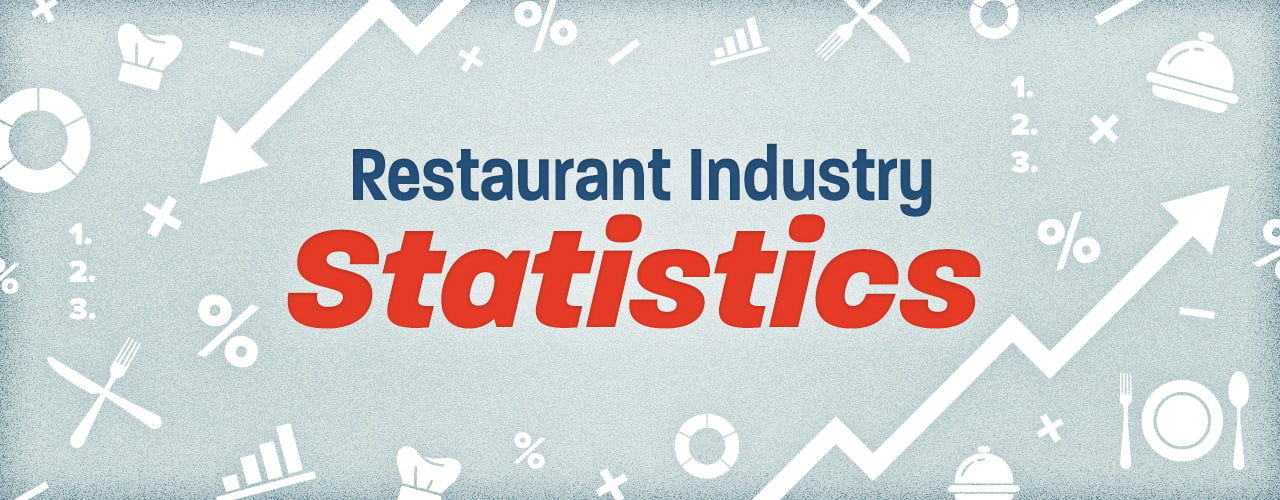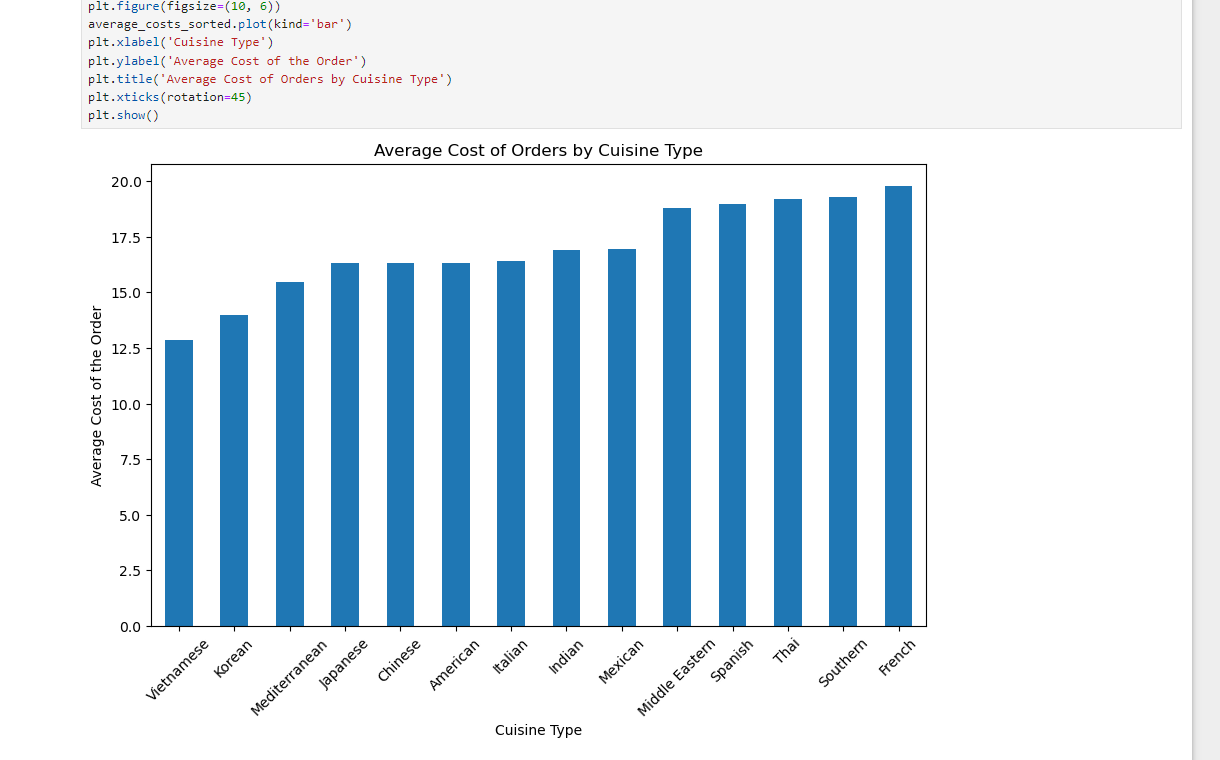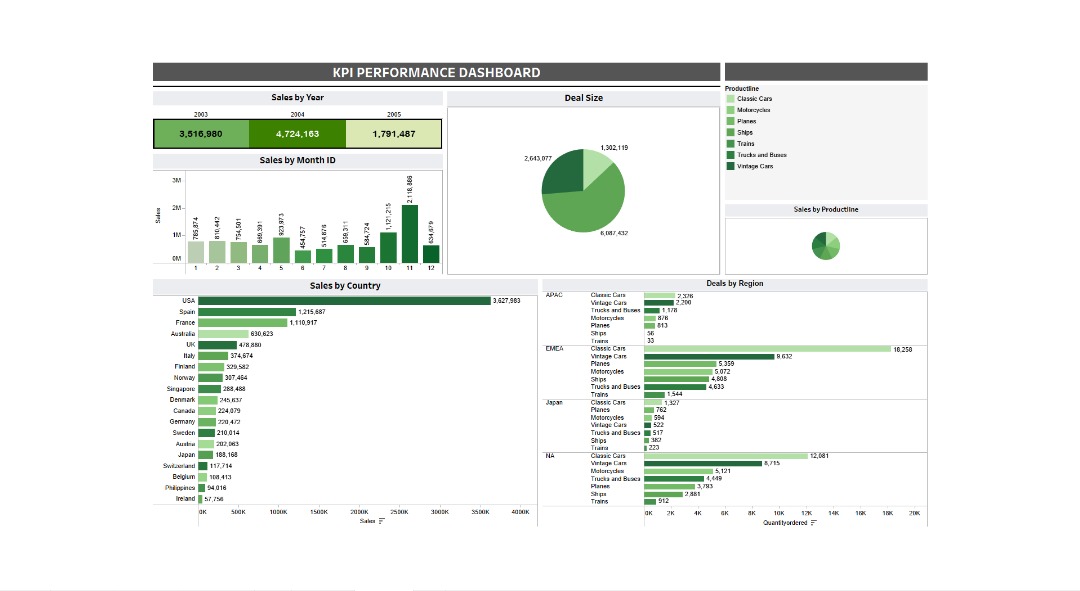
Exploratory Data Analysis (Restaurant Sales in NYC Data)
This portfolio project was an opportunity to analyze a dataset that can provide insights to the restaurant management service in NYC.¶
The aim of the project was to answer the following questions through exploratory data analysis.¶
What is the minimum, average, and maximum time it takes for food to be prepared once an order is placed?
How many orders are not rated? Is this data clean? Why or why not?
What are the most popular cuisine types?
How does their price range and review rating compare to those that don't perforT as well?
try to find out why they perform better.
Are they ordering more on weekdays or weekends?
Is preparation time longer on weekdays or weekends?
What is the delivery time on weekdays vs weekends?
Which are the top restaurants with orders received?
What is the most popular cuisine type on weekends?
what percentage of orders are less than $20? less than $30? $40? $50? what is the average delivery time in NYC?
The company has decided to give 20% discount vouchers to the top 3 most frequent customers. Find the IDs of these customers and the number of orders hey placed cost of cuisine typ comparison ratings based on cuisine type preparation time based o cuisine type.
The company want p to provide a promotional offer in the advertisement of the restaurants. The condition to get the offer is that the restaurants must have a rating count of more than 50 and the average rating should be greater than 4.
Find the restaurants fulfilling the criteria to get the promotional offer. The company charges the restaurant 25% on the orders having cost greater than 20 dollars and 15% on the orders having cost greater than 5 dollars. Find the net revenue generated by the company across all orders.
The company wants to analyze the total time required to deliver the food. What percentage of orders take more than 60 minutes to get delivered from the time the order is placed? (The food has to be prepared and then delivered.)
The company wants to analyze the delivery time of the orders on weekdays and weekends. How does the mean delivery time vary during week days and weekends?
What are your conclusions from the analysis? What recommendations would you like to share to help improve the business? ove the business?
I used the process of Exploratory Data Analysis EDA to answer the above questions¶
import numpy as np
import pandas as pd
import matplotlib.pyplot as plt
import seaborn as sns
import plotly.express as px
from sklearn.preprocessing import LabelEncoder
df=pd.read_csv ('foodhub.csv')
df.head()
| order_id | customer_id | restaurant_name | cuisine_type | cost_of_the_order | day_of_the_week | rating | food_preparation_time | delivery_time | |
|---|---|---|---|---|---|---|---|---|---|
| 0 | 1477147 | 337525 | Hangawi | Korean | 30.75 | Weekend | Not given | 25 | 20 |
| 1 | 1477685 | 358141 | Blue Ribbon Sushi Izakaya | Japanese | 12.08 | Weekend | Not given | 25 | 23 |
| 2 | 1477070 | 66393 | Cafe Habana | Mexican | 12.23 | Weekday | 5 | 23 | 28 |
| 3 | 1477334 | 106968 | Blue Ribbon Fried Chicken | American | 29.20 | Weekend | 3 | 25 | 15 |
| 4 | 1478249 | 76942 | Dirty Bird to Go | American | 11.59 | Weekday | 4 | 25 | 24 |
#Is this data clean?
df.shape
(1898, 9)
df.columns
Index(['order_id', 'customer_id', 'restaurant_name', 'cuisine_type',
'cost_of_the_order', 'day_of_the_week', 'rating',
'food_preparation_time', 'delivery_time'],
dtype='object')
1. Is the date clean? why or why not?¶
df.isnull().sum()
order_id 0 customer_id 0 restaurant_name 0 cuisine_type 0 cost_of_the_order 0 day_of_the_week 0 rating 0 food_preparation_time 0 delivery_time 0 dtype: int64
df.duplicated().sum()
0
df.info()
<class 'pandas.core.frame.DataFrame'> RangeIndex: 1898 entries, 0 to 1897 Data columns (total 9 columns): # Column Non-Null Count Dtype --- ------ -------------- ----- 0 order_id 1898 non-null int64 1 customer_id 1898 non-null int64 2 restaurant_name 1898 non-null object 3 cuisine_type 1898 non-null object 4 cost_of_the_order 1898 non-null float64 5 day_of_the_week 1898 non-null object 6 rating 1898 non-null object 7 food_preparation_time 1898 non-null int64 8 delivery_time 1898 non-null int64 dtypes: float64(1), int64(4), object(4) memory usage: 133.6+ KB
Data is cleaned, no null values, no duplicate values¶
2. What is the minimum, average, and maximum time it takes for food to be prepared once an order is placed?¶
df.describe()
| order_id | customer_id | cost_of_the_order | food_preparation_time | delivery_time | |
|---|---|---|---|---|---|
| count | 1.898000e+03 | 1898.000000 | 1898.000000 | 1898.000000 | 1898.000000 |
| mean | 1.477496e+06 | 171168.478398 | 16.498851 | 27.371970 | 24.161749 |
| std | 5.480497e+02 | 113698.139743 | 7.483812 | 4.632481 | 4.972637 |
| min | 1.476547e+06 | 1311.000000 | 4.470000 | 20.000000 | 15.000000 |
| 25% | 1.477021e+06 | 77787.750000 | 12.080000 | 23.000000 | 20.000000 |
| 50% | 1.477496e+06 | 128600.000000 | 14.140000 | 27.000000 | 25.000000 |
| 75% | 1.477970e+06 | 270525.000000 | 22.297500 | 31.000000 | 28.000000 |
| max | 1.478444e+06 | 405334.000000 | 35.410000 | 35.000000 | 33.000000 |
The Minimum time for 20 minutes, the maximum time is 35 minutes and the average time is 27.37 minutes¶
3. How many orders are not rated?¶
count_rate = df['rating'].value_counts()
count_rate
rating Not given 736 5 588 4 386 3 188 Name: count, dtype: int64
There are no reviews for 736 orders¶
4. What are the most popular cuisine types?¶
How does their price range and review rating compare to those that don't perform as well? try to find out why they perform better.
count_cusine = df['cuisine_type'].value_counts()
count_cusine
cuisine_type American 584 Japanese 470 Italian 298 Chinese 215 Mexican 77 Indian 73 Middle Eastern 49 Mediterranean 46 Thai 19 French 18 Southern 17 Korean 13 Spanish 12 Vietnamese 7 Name: count, dtype: int64
The 4 most popular cuisine_type are; American (584) Japanese (470) Italian (298) Chinese (215)
def calculate_average_cost_by_cuisine(df):
# Grouping by 'cuisine_type' and calculate the mean of average 'cost_of_the_order'
average_costs = df.groupby('cuisine_type')['cost_of_the_order'].mean()
return average_costs
average_costs = calculate_average_cost_by_cuisine(df)
print(average_costs)
cuisine_type American 16.319829 Chinese 16.305209 French 19.793889 Indian 16.919726 Italian 16.418691 Japanese 16.304532 Korean 14.001538 Mediterranean 15.474783 Mexican 16.933117 Middle Eastern 18.820612 Southern 19.300588 Spanish 18.994167 Thai 19.207895 Vietnamese 12.882857 Name: cost_of_the_order, dtype: float64
average_costs_sorted = average_costs.sort_values(ascending=True)
plt.figure(figsize=(10, 6))
average_costs_sorted.plot(kind='bar')
plt.xlabel('Cuisine Type')
plt.ylabel('Average Cost of the Order')
plt.title('Average Cost of Orders by Cuisine Type')
plt.xticks(rotation=45)
plt.show()
def calculate_average_rating_by_cuisine(df):
# Grouping by 'cuisine_type' and calculate the mean of average rating
# Replace "Not given" with NaN
df['rating'] = pd.to_numeric(df['rating'], errors='coerce')
average_rating = df.groupby('cuisine_type')['rating'].mean()
return average_rating
average_rating = calculate_average_rating_by_cuisine(df)
print(average_rating)
cuisine_type American 4.298913 Chinese 4.338346 French 4.300000 Indian 4.540000 Italian 4.360465 Japanese 4.373626 Korean 4.111111 Mediterranean 4.218750 Mexican 4.416667 Middle Eastern 4.235294 Southern 4.307692 Spanish 4.833333 Thai 4.666667 Vietnamese 4.000000 Name: rating, dtype: float64
std_dev_mean_ratings = average_rating.std()
print(std_dev_mean_ratings)
0.21328238900474772
dataframe=df.loc[:,['restaurant_name','cuisine_type','cost_of_the_order','day_of_the_week','rating','food_preparation_time', 'delivery_time']]
dataframe.head()
| restaurant_name | cuisine_type | cost_of_the_order | day_of_the_week | rating | food_preparation_time | delivery_time | |
|---|---|---|---|---|---|---|---|
| 0 | Hangawi | Korean | 30.75 | Weekend | NaN | 25 | 20 |
| 1 | Blue Ribbon Sushi Izakaya | Japanese | 12.08 | Weekend | NaN | 25 | 23 |
| 2 | Cafe Habana | Mexican | 12.23 | Weekday | 5.0 | 23 | 28 |
| 3 | Blue Ribbon Fried Chicken | American | 29.20 | Weekend | 3.0 | 25 | 15 |
| 4 | Dirty Bird to Go | American | 11.59 | Weekday | 4.0 | 25 | 24 |
What is the correlationship that exists within the dataset?¶
# Label encode categorical columns
label_encoder = LabelEncoder()
# List of categorical columns to encode
categorical_columns = ['restaurant_name', 'cuisine_type', 'day_of_the_week']
for column in categorical_columns:
dataframe[column] = label_encoder.fit_transform(dataframe[column])
dataframe.head()
| restaurant_name | cuisine_type | cost_of_the_order | day_of_the_week | rating | food_preparation_time | delivery_time | |
|---|---|---|---|---|---|---|---|
| 0 | 67 | 6 | 30.75 | 1 | NaN | 25 | 20 |
| 1 | 23 | 5 | 12.08 | 1 | NaN | 25 | 23 |
| 2 | 29 | 8 | 12.23 | 0 | 5.0 | 23 | 28 |
| 3 | 20 | 0 | 29.20 | 1 | 3.0 | 25 | 15 |
| 4 | 47 | 0 | 11.59 | 0 | 4.0 | 25 | 24 |
dataframe.corr()
| restaurant_name | cuisine_type | cost_of_the_order | day_of_the_week | rating | food_preparation_time | delivery_time | |
|---|---|---|---|---|---|---|---|
| restaurant_name | 1.000000 | -0.110332 | -0.012247 | -0.001656 | 0.031119 | 0.007109 | 0.026797 |
| cuisine_type | -0.110332 | 1.000000 | 0.035184 | -0.012140 | 0.028304 | -0.028737 | -0.005913 |
| cost_of_the_order | -0.012247 | 0.035184 | 1.000000 | 0.015960 | 0.033983 | 0.041527 | -0.029949 |
| day_of_the_week | -0.001656 | -0.012140 | 0.015960 | 1.000000 | 0.030727 | 0.021970 | -0.534801 |
| rating | 0.031119 | 0.028304 | 0.033983 | 0.030727 | 1.000000 | -0.006083 | -0.009804 |
| food_preparation_time | 0.007109 | -0.028737 | 0.041527 | 0.021970 | -0.006083 | 1.000000 | 0.011094 |
| delivery_time | 0.026797 | -0.005913 | -0.029949 | -0.534801 | -0.009804 | 0.011094 | 1.000000 |
sns.heatmap(dataframe.corr(),
annot=True,
cbar=False)
plt.show()
a. The price range and reviews do no directly explain why some cuisine perform better because the average rating of cuisine is between 4.0 and 4.83 and standard deviation of 0.21 which implies the data points are very close to the mean.¶
b. In same light, there is no linear relationship within the dataset.¶
dataframe2=df.loc[:,['restaurant_name','cuisine_type','cost_of_the_order','day_of_the_week','rating','food_preparation_time', 'delivery_time']]
dataframe.head()
| restaurant_name | cuisine_type | cost_of_the_order | day_of_the_week | rating | food_preparation_time | delivery_time | |
|---|---|---|---|---|---|---|---|
| 0 | 67 | 6 | 30.75 | 1 | NaN | 25 | 20 |
| 1 | 23 | 5 | 12.08 | 1 | NaN | 25 | 23 |
| 2 | 29 | 8 | 12.23 | 0 | 5.0 | 23 | 28 |
| 3 | 20 | 0 | 29.20 | 1 | 3.0 | 25 | 15 |
| 4 | 47 | 0 | 11.59 | 0 | 4.0 | 25 | 24 |
# Group by 'cuisine_type' and 'day_of_the_week' and count the number of orders
order_counts = df.groupby(['cuisine_type', 'day_of_the_week']).size().unstack(fill_value=0)
# Display the result
print(order_counts)
day_of_the_week Weekday Weekend cuisine_type American 169 415 Chinese 52 163 French 5 13 Indian 24 49 Italian 91 207 Japanese 135 335 Korean 2 11 Mediterranean 14 32 Mexican 24 53 Middle Eastern 17 32 Southern 6 11 Spanish 1 11 Thai 4 15 Vietnamese 3 4
average_times = df.groupby('cuisine_type')[['food_preparation_time', 'delivery_time']].mean()
print(average_times)
food_preparation_time delivery_time cuisine_type American 27.440068 24.193493 Chinese 27.511628 23.855814 French 26.888889 25.333333 Indian 27.109589 24.082192 Italian 27.483221 24.567114 Japanese 27.510638 24.131915 Korean 25.461538 20.923077 Mediterranean 27.000000 23.586957 Mexican 26.727273 24.389610 Middle Eastern 26.673469 24.081633 Southern 27.588235 23.823529 Spanish 26.916667 23.416667 Thai 27.315789 23.157895 Vietnamese 25.714286 26.142857
# Reset index to use cuisine_type as a column for plotting
average_times = average_times.reset_index()
plt.figure(figsize=(9, 5))
sns.barplot(x='cuisine_type', y='food_preparation_time', data=average_times, palette='viridis')
plt.title('Average Food Preparation Time by Cuisine Type')
plt.xlabel('Cuisine Type')
plt.ylabel('Average Food Preparation Time (minutes)')
plt.xticks(rotation=45)
plt.show()
# Plot the average delivery time
plt.figure(figsize=(9, 5))
sns.barplot(x='cuisine_type', y='delivery_time', data=average_times, palette='viridis')
plt.title('Average Delivery Time by Cuisine Type')
plt.xlabel('Cuisine Type')
plt.ylabel('Average Delivery Time (minutes)')
plt.xticks(rotation=45)
plt.show()
I have tried to look at the discrepancies in the data from total orders by weekday and weekend, and also looking at the average preparation time and selivery time.¶
However, the cuisine performance could be a preferance of the population charactics; such as background influence.
5. Are they ordering more on weekdays or weekends?¶
The above analysis shows that more orders come on the weekends looking at the counts
6. Is preparation time longer on weekdays or weekends?¶
average_times_by_week = df.groupby('day_of_the_week')[['food_preparation_time', 'delivery_time']].mean()
print(average_times_by_week)
food_preparation_time delivery_time day_of_the_week Weekday 27.212066 28.340037 Weekend 27.436714 22.470022
Preparation time is slightly longer on weekend with an average of 27.44 , fairly explained by the high orders received.¶
On the orther have delivery time is higher on the weekdays.
7. which are the top restaurants with orders received?¶
count_restaurants = df['restaurant_name'].value_counts()
freq_above_30 = count_restaurants[count_restaurants > 30]
print(freq_above_30)
restaurant_name Shake Shack 219 The Meatball Shop 132 Blue Ribbon Sushi 119 Blue Ribbon Fried Chicken 96 Parm 68 RedFarm Broadway 59 RedFarm Hudson 55 TAO 49 Han Dynasty 46 Blue Ribbon Sushi Bar & Grill 44 Nobu Next Door 42 Rubirosa 37 Sushi of Gari 46 37 Name: count, dtype: int64
The top three restaurants are;¶
Shake Shack (219), The Meatball Shop (132), and Blue Ribbon Sushi (119)
filtered_restaurants = df['restaurant_name'].value_counts()[df['restaurant_name'].value_counts() > 30]
# Sort ratings by their counts in ascending order
sorted_res = filtered_restaurants.index
plt.figure(figsize = (10,8))
sns.countplot(y='restaurant_name', data=df[df['restaurant_name'].isin(filtered_restaurants.index)], order=sorted_res,palette='viridis')
plt.xlabel('Frequency')
plt.ylabel('Restaurant')
plt.show()
The most popular restaurants by orders are Blue Shake Shack 219, The Meatball Shop 132, and Blue Ribbon Sushi 119
8. what is the most popular cuisine type on weekends?¶
weekend_cuisine_order = df.groupby(['cuisine_type', 'day_of_the_week']).size().unstack(fill_value=0)
print(weekend_cuisine_order)
day_of_the_week Weekday Weekend cuisine_type American 169 415 Chinese 52 163 French 5 13 Indian 24 49 Italian 91 207 Japanese 135 335 Korean 2 11 Mediterranean 14 32 Mexican 24 53 Middle Eastern 17 32 Southern 6 11 Spanish 1 11 Thai 4 15 Vietnamese 3 4
# Filter DataFrame for
filtered_df = df[df['day_of_the_week'].isin(['Weekend'])]
#order
sorted_cuisines = filtered_df.index
# Plotting with Seaborn
plt.figure(figsize=(12, 6))
sns.countplot(data=filtered_df, x='cuisine_type', hue='day_of_the_week', palette='viridis')
plt.title('Cuisine Type Count for Monday and Tuesday')
plt.xlabel('Cuisine Type')
plt.ylabel('Count')
plt.xticks(rotation=45)
plt.show()
9. what percentage of orders are less than $20? less than $30? $40? $50?¶
def percentage_below_thresholds(df, thresholds, column_name='cost_of_the_order'):
total_orders = df.shape[0]
percentages = {}
for threshold in thresholds:
orders_below_threshold = df[df[column_name] < threshold].shape[0]
percentage_below_threshold = (orders_below_threshold / total_orders) * 100
percentages[threshold] = percentage_below_threshold
return percentages
# Define the thresholds
thresholds = [20, 30, 40, 50]
# Get the percentages
percentages = percentage_below_thresholds(df, thresholds)
# Print the results
for threshold, percentage in percentages.items():
print(f"Percentage of orders less than ${threshold}: {percentage:.2f}%")
Percentage of orders less than $20: 70.76% Percentage of orders less than $30: 94.73% Percentage of orders less than $40: 100.00% Percentage of orders less than $50: 100.00%
- what is the average delivery time in NYC?
df['delivery_time'].mean()
24.161749209694417
IDs of these customers and the number of orders they placed¶
def top_customers(df, n=3):
# Group by customer_id and count the number of orders for each customer
customer_order_counts = df['customer_id'].value_counts()
# Get the top n customers
top_n_customers = customer_order_counts.head(n)
# Convert to DataFrame for better readability
top_n_customers_df = top_n_customers.reset_index()
top_n_customers_df.columns = ['customer_id', 'number_of_orders']
return top_n_customers_df
# Get the top 3 customers
top_3_customers = top_customers(df, 3)
print(top_3_customers)
customer_id number_of_orders 0 52832 13 1 47440 10 2 83287 9
def top_customers_cuisines(df, n=3):
# Group customer_id and count the number of orders for each customer
customer_order_counts = df['customer_id'].value_counts()
# Get top n customers
top_n_customers = customer_order_counts.head(n).index
# Filter DFrame to include only orders from the top n customers
top_customers_orders = df[df['customer_id'].isin(top_n_customers)]
# Get unique cuisines from these orders
top_cuisines = top_customers_orders['cuisine_type'].unique()
return top_cuisines
# Get cuisines for top 3 customers
top_cuisines = top_customers_cuisines(df, 3)
print(top_cuisines)
['American' 'Chinese' 'Middle Eastern' 'Japanese' 'Mexican' 'Korean' 'Indian' 'Spanish' 'French']
def top_customers_top_cuisines_cost(df, n_customers=3, n_cuisines=9):
# Group customer_id and count the number of orders for each customer
customer_order_counts = df['customer_id'].value_counts()
# Get top n_customers customers based on number of orders
top_customers = customer_order_counts.head(n_customers).index
# Filter DataFrame to include only orders from top customers
top_customers_orders = df[df['customer_id'].isin(top_customers)]
# Calculate the total cost of orders for each cuisine type
cuisine_total_cost = top_customers_orders.groupby('cuisine_type')['cost_of_the_order'].sum()
# Get top n_cuisines cuisines based on total order cost
top_cuisines = cuisine_total_cost.sort_values(ascending=False).head(n_cuisines)
return top_cuisines
# Get total cost for top 3 cuisines ordered by top customers
top_cuisines_cost = top_customers_top_cuisines_cost(df, 3, 9)
print(top_cuisines_cost)
cuisine_type American 232.64 Japanese 96.58 Indian 54.66 Middle Eastern 40.89 Chinese 31.53 French 24.20 Mexican 16.06 Spanish 14.50 Korean 12.23 Name: cost_of_the_order, dtype: float64
plt.figure(figsize=(10, 7))
plt.pie(top_cuisines_cost, labels=top_cuisines_cost.index, autopct='%1.1f%%', startangle=140, )
plt.title('Total Cost Distribution by Cuisine')
plt.axis('equal') # Equal aspect ratio ensures that pie is drawn as a circle.
plt.show()
What are the ratings based on cuisine type and average rating from top customers only?¶
def top_customers_cuisine_rating_stats(df, n_customers=3):
# customer_id and count number of orders for each customer
customer_order_counts = df['customer_id'].value_counts()
# top n_customers customers based on number of orders
top_n_customers = customer_order_counts.head(n_customers).index
# DF to include only orders from top n_customers customers
top_customers_orders = df[df['customer_id'].isin(top_n_customers)]
# empty lists to store ratings and number of ratings per cuisine
cuisine_ratings = []
cuisine_num_ratings = []
# Iterate over each cuisine type
for cuisine in top_customers_orders['cuisine_type'].unique():
# orders for the current cuisine
cuisine_orders = top_customers_orders[top_customers_orders['cuisine_type'] == cuisine]
# 'Not given' ratings to NaN
cuisine_orders['rating'] = pd.to_numeric(cuisine_orders['rating'], errors='coerce')
# number of ratings and average rating for the current cuisine
num_ratings = cuisine_orders['rating'].count()
avg_rating = cuisine_orders['rating'].mean()
# results to lists
cuisine_ratings.append(avg_rating)
cuisine_num_ratings.append(num_ratings)
# DF to store results
results_df = pd.DataFrame({
'cuisine_type': top_customers_orders['cuisine_type'].unique(),
'num_ratings': cuisine_num_ratings,
'avg_rating': cuisine_ratings
})
return results_df
# Get ratings statistics for top customers for each cuisine
ratings_stats_per_cuisine = top_customers_cuisine_rating_stats(df, 3)
print(ratings_stats_per_cuisine)
cuisine_type num_ratings avg_rating 0 American 11 4.090909 1 Chinese 1 3.000000 2 Middle Eastern 2 3.500000 3 Japanese 3 5.000000 4 Mexican 0 NaN 5 Korean 0 NaN 6 Indian 1 5.000000 7 Spanish 0 NaN 8 French 0 NaN
C:\Users\Brene\AppData\Local\Temp\ipykernel_16032\3916300919.py:21: SettingWithCopyWarning: A value is trying to be set on a copy of a slice from a DataFrame. Try using .loc[row_indexer,col_indexer] = value instead See the caveats in the documentation: https://pandas.pydata.org/pandas-docs/stable/user_guide/indexing.html#returning-a-view-versus-a-copy cuisine_orders['rating'] = pd.to_numeric(cuisine_orders['rating'], errors='coerce')
Preparation time based on cuisine type
def top_customers_cuisine_preparation_time(df, n_customers=3):
# customer_id and count the number of orders for each customer
customer_order_counts = df['customer_id'].value_counts()
# top n_customers customers based on number of orders
top_n_customers = customer_order_counts.head(n_customers).index
# DataFrame to include only orders from the top n_customers customers
top_customers_orders = df[df['customer_id'].isin(top_n_customers)]
# Total preparation time for each cuisine type
cuisine_total_preparation_time = top_customers_orders.groupby('cuisine_type')['food_preparation_time'].sum()
return cuisine_total_preparation_time
# total preparation time for each cuisine type for the top 3 customers
total_preparation_time_per_cuisine = top_customers_cuisine_preparation_time(df, 3)
print(total_preparation_time_per_cuisine)
cuisine_type American 403 Chinese 67 French 28 Indian 46 Japanese 206 Korean 32 Mexican 35 Middle Eastern 51 Spanish 35 Name: food_preparation_time, dtype: int64
total_preparation_time_per_cuisine.sort_values( ascending=False, inplace=True)
plt.figure(figsize=(8, 6))
data=total_preparation_time_per_cuisine.plot(kind='bar', )
plt.title('Total Food Preparation Time by Cuisine (Top 3 Customers)')
plt.xlabel('Cuisine Type')
plt.ylabel('Total Preparation Time')
plt.xticks(rotation=45)
plt.show()
The company wants to provide a promotional offer in the advertisement of the restaurants. The condition to get the offer is that the restaurants must have a rating count of more than 50 and the average rating should be greater than 4. Find the restaurants fulfilling the criteria to get the promotional offer¶
def top_restaurants_by_ratings(df, min_rating_count=50, min_avg_rating=4):
# Filter out "Not given" ratings to numeric values
df_filtered = df[df['rating'] != 'Not given'].copy()
df_filtered['rating'] = pd.to_numeric(df_filtered['rating'])
#restaurant_name and calculate rating count and average rating
rating_stats = df_filtered.groupby('restaurant_name')['rating'].agg(['count', 'mean']).reset_index()
rating_stats.columns = ['restaurant_name', 'rating_count', 'avg_rating']
# the conditions to be met
top_restaurants = rating_stats[(rating_stats['rating_count'] >= min_rating_count) & (rating_stats['avg_rating'] >= min_avg_rating)]
return top_restaurants
# top restaurants based on the criteria
top_restaurants = top_restaurants_by_ratings(df, min_rating_count=50, min_avg_rating=4)
print(top_restaurants)
restaurant_name rating_count avg_rating 20 Blue Ribbon Fried Chicken 64 4.328125 21 Blue Ribbon Sushi 73 4.219178 136 Shake Shack 133 4.278195 153 The Meatball Shop 84 4.511905
top_restaurants.head()
| restaurant_name | rating_count | avg_rating | |
|---|---|---|---|
| 20 | Blue Ribbon Fried Chicken | 64 | 4.328125 |
| 21 | Blue Ribbon Sushi | 73 | 4.219178 |
| 136 | Shake Shack | 133 | 4.278195 |
| 153 | The Meatball Shop | 84 | 4.511905 |
The company charges the restaurant 25% on the orders having cost greater than 20 dollars and 15% on the orders having cost greater than 5 dollars. Find the net revenue generated by the company across all orders.¶
def top_restaurants_by_ratings(df, min_rating_count=50, min_avg_rating=4):
#"Not given" ratings and convert ratings to numeric values
df_filtered = df[df['rating'] != 'Not given'].copy()
df_filtered['rating'] = pd.to_numeric(df_filtered['rating'])
# restaurant_name and calculate rating count and average rating
rating_stats = df_filtered.groupby('restaurant_name')['rating'].agg(['count', 'mean']).reset_index()
rating_stats.columns = ['restaurant_name', 'rating_count', 'avg_rating']
# based on the conditions
top_restaurants = rating_stats[(rating_stats['rating_count'] >= min_rating_count) & (rating_stats['avg_rating'] >= min_avg_rating)]
return top_restaurants
# top restaurants based on the criteria
top_restaurants = top_restaurants_by_ratings(df, min_rating_count=50, min_avg_rating=4)
top_restaurant_orders = df[df['restaurant_name'].isin(top_restaurants['restaurant_name'])]
def calculate_advertising_charges(df):
# Calculate the advertising charge based on the cost_of_the_order
df['advertising_charge'] = df['cost_of_the_order'].apply(lambda x: 0.25 * x if x > 20 else (0.15 * x if x > 5 else 0))
return df
#Advertising charges to the orders from top restaurants
top_restaurant_orders_with_charges = calculate_advertising_charges(top_restaurant_orders)
print(top_restaurant_orders_with_charges)
order_id customer_id restaurant_name cuisine_type \
3 1477334 106968 Blue Ribbon Fried Chicken American
6 1477894 157711 The Meatball Shop Italian
12 1476966 129969 Blue Ribbon Fried Chicken American
15 1477414 66222 Shake Shack American
19 1477354 67487 Blue Ribbon Sushi Japanese
... ... ... ... ...
1887 1476873 237616 Shake Shack American
1888 1477353 106324 The Meatball Shop Italian
1891 1476981 138586 Shake Shack American
1895 1477819 35309 Blue Ribbon Sushi Japanese
1897 1478056 120353 Blue Ribbon Sushi Japanese
cost_of_the_order day_of_the_week rating food_preparation_time \
3 29.20 Weekend 3.0 25
6 6.07 Weekend NaN 28
12 24.30 Weekend 5.0 23
15 16.20 Weekend 5.0 33
19 16.20 Weekend 4.0 35
... ... ... ... ...
1887 5.82 Weekend NaN 26
1888 16.20 Weekend 5.0 21
1891 5.82 Weekend NaN 22
1895 25.22 Weekday NaN 31
1897 19.45 Weekend NaN 28
delivery_time advertising_charge
3 15 7.3000
6 21 0.9105
12 17 6.0750
15 25 2.4300
19 26 2.4300
... ... ...
1887 30 0.8730
1888 26 2.4300
1891 28 0.8730
1895 24 6.3050
1897 24 2.9175
[566 rows x 10 columns]
C:\Users\Brene\AppData\Local\Temp\ipykernel_16032\2839648762.py:20: SettingWithCopyWarning: A value is trying to be set on a copy of a slice from a DataFrame. Try using .loc[row_indexer,col_indexer] = value instead See the caveats in the documentation: https://pandas.pydata.org/pandas-docs/stable/user_guide/indexing.html#returning-a-view-versus-a-copy df['advertising_charge'] = df['cost_of_the_order'].apply(lambda x: 0.25 * x if x > 20 else (0.15 * x if x > 5 else 0))
top_restaurant_orders_with_charges.head()
| order_id | customer_id | restaurant_name | cuisine_type | cost_of_the_order | day_of_the_week | rating | food_preparation_time | delivery_time | advertising_charge | |
|---|---|---|---|---|---|---|---|---|---|---|
| 3 | 1477334 | 106968 | Blue Ribbon Fried Chicken | American | 29.20 | Weekend | 3.0 | 25 | 15 | 7.3000 |
| 6 | 1477894 | 157711 | The Meatball Shop | Italian | 6.07 | Weekend | NaN | 28 | 21 | 0.9105 |
| 12 | 1476966 | 129969 | Blue Ribbon Fried Chicken | American | 24.30 | Weekend | 5.0 | 23 | 17 | 6.0750 |
| 15 | 1477414 | 66222 | Shake Shack | American | 16.20 | Weekend | 5.0 | 33 | 25 | 2.4300 |
| 19 | 1477354 | 67487 | Blue Ribbon Sushi | Japanese | 16.20 | Weekend | 4.0 | 35 | 26 | 2.4300 |
#Revenue generated across all orders
top_restaurant_orders_with_charges['advertising_charge'].sum()
1824.0994999999998
Advert Charges stands at 1824 dollars
# Add a new column 'total_time' which is the sum of 'food_preparation_time' and 'delivery_time'
df['total_time'] = df['food_preparation_time'] + df['delivery_time']
def percentage_of_long_orders(df, threshold=60):
# %tage of orders with 'total_time' >= threshold
total_orders = len(df)
long_orders = len(df[df['total_time'] >= threshold])
percentage = (long_orders / total_orders) * 100
return percentage
# %tage of orders that take 60 minutes or more
percentage_60_plus = percentage_of_long_orders(df, 60)
print(f"Percentage of orders that take 60 minutes or more: {percentage_60_plus:.2f}%")
Percentage of orders that take 60 minutes or more: 12.91%
The company wants to analyze the delivery time of the orders on weekdays and weekends. How does the mean delivery time vary during weekdays and weekends?
average_delivery = df.groupby('day_of_the_week')['delivery_time'].mean()
print(average_delivery)
day_of_the_week Weekday 28.340037 Weekend 22.470022 Name: delivery_time, dtype: float64
What are your conclusions from the analysis? What recommendations would you like to share to help improve the business?¶
Based on the analysis, we can derive several conclusions and recommendations to help improve the business:
Conclusions¶
Order Distribution by Cuisine¶
The majority of orders come from American, Japanese, and Italian cuisines. Lesser popular cuisines include Vietnamese, Spanish, and Korean.
Average Order Cost¶
Higher average order costs are associated with cuisines liThai, Southern and Frenchean. Lower average order costs are seen in cuisines liVietnamese, Mediterranean, and Koreanern.
Order Frequency by Day of the Week¶
The distribution of orders varies across weekdays and weekendCe cuisines might have higher demand on specific days (e.g., weekends might see more orders foverall of cuisine).
Food Preparation and Delivery Times¶
Average food preparation and delivery times differ by cuisine. Some cuisines have longer preparation and delivery times which might affect customer satisfaction.
Order Time Distribution¶
A significant percentage of orders take more th5n 60 minutes, which could impact customer satisfaction.
Top Customers¶
Identifying top customers and their preferences helps in personalizing marketing efforts. The top customers contribute significantly to revenue and order freque ncy.
Top Restaurants¶
Restaurants with high average ratings and frequent orders can be promoted to maintain and enhance customer loyalty.
Advertising Charges¶
Implementing advertising charges based on order costs could provide an additional revenue stream.
Recommendations¶
Focus on Popular Cuisines¶
Invest in marketing and promotions for the most popular cuisines (American, Japanese, Italian) to leverage their high demand. Introduce special offers or discounts to boost orders for less popular cuisines.
Improve Preparation and Delivery Efficiency¶
Analyze the preparation and delivery processes for cuisines with longer times to identify bottlenecks. Implement measures to streamline operations and reduce total time to enhance customer satisfaction.
Dynamic Pricing and Discounts¶
Implement dynamic pricing strategies based on demand patterns observed on different days of the week. Offer discounts on slower days to balance the order distribution.
Enhance Customer Experience¶
Focus on reducing the percentage of orders taking more than 60 minutes by optimizing logistics and staff management. Regularly gather customer feedback to identify pain points and areas for improvement.
Personalized Marketing¶
Use insights from top customers to personalize marketing campaigns and offers. Encourage repeat orders from top customers through loyalty programs and exclusive deals.
Promote High-Rated Restaurants¶
Highlight and promote restaurants with high average ratings and frequent orders in different marketing materials. Collaborate with these restaurants for special events like workshops/seminars or promotions.





